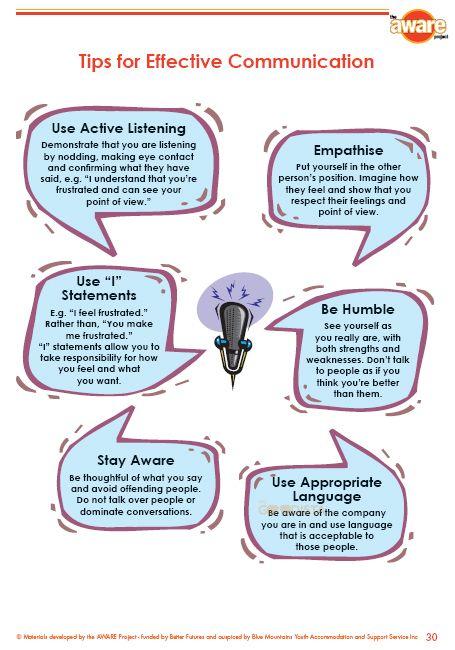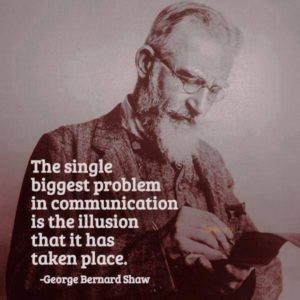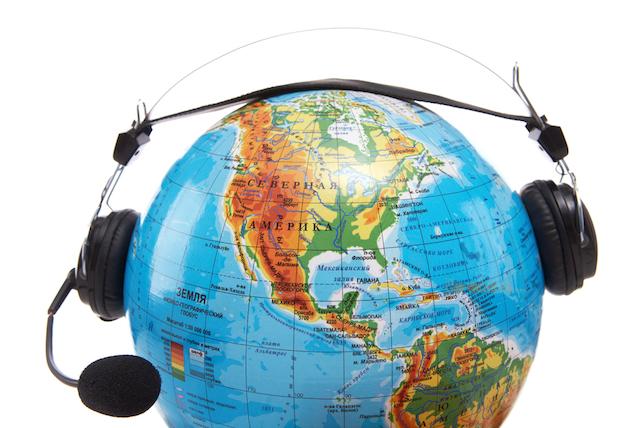 For us that work or live far away communication from home means so much more than we can describe. It is a lifeline to normality. We need it to keep on going. Yet – we have a challenge.
For us that work or live far away communication from home means so much more than we can describe. It is a lifeline to normality. We need it to keep on going. Yet – we have a challenge.
Communication today comes with a ping. Digital diarrhoea cloud our minds. We look, but don’t see. Listen, but can’t hear. We speak, but do we talk? Feel, but do we sense? We SMS, and most certainly do not write. Among overstressed like-minded the norm is to shrug your shoulders and move on. ‘Everybody’ has the same social media obligations. The art of communication seems long-lost.
For us that work or live far away communication from home means so much more than we can describe. It is a lifeline to normality. We need it to keep on going. If you live or work far away, or have a loved one that is based in a remote duty station – you will appreciate the do’s and don’ts that make communication key to our personal and business relationships. Read on, comment and share what your experiences are too.
Communication: What Is It?
Communication is the act of using words, sounds, signs, or behaviours to convey information for the purpose of creating a shared understanding. We do it everyday. In Latin “communis” means “to share”. Today communication includes verbal, non-verbal and electronic means of human interaction.
 Verbal: face-to-face, telephone, radio or television and other media.
Verbal: face-to-face, telephone, radio or television and other media.- Non-Verbal: body language, gestures, how we dress, act and smell (perfume, body odour etc)
- Written: letters, e-mails, messages, books, magazines using digital media, internet or of course paper form.
- Visual: graphs, charts, maps, logos and other visualizations
 In everyday life it is assumed that everyone has the same means at their disposal to communicate. No so!
In everyday life it is assumed that everyone has the same means at their disposal to communicate. No so!
If you are based in a remote location, live or work far away, the barriers to communication range from bad connectivity (internet speed) to cultural differences. Read Part 2 in this series: Communication Barriers and Work (far) Away.
Join The GOODista Mailing List (so you never miss a post again.) Yes!
Communication Across Borders: Do’s and Don’ts
Staying in touch takes so much more than Facebook-ing . You need to actively work on a relationship. When you are far away this means reaching out, and working on interactions. However – your efforts have to be reciprocated. Communication has to be two-way.
Sharing, and seeking to understand, across airways and borders. Communication is an art, and learning communication skills takes understanding. (See these tips from WikiHow: How to develop good communication skills.)
Verbal, Non-Verbal, Written and Visual Communication
Verbal
Speaking is not as easy as just picking up the phone, or connecting via Skype / FaceTime if you are far away. We get caught up in connectivity hassles, and the conversations end up being about ‘Can you hear me?’, ‘What did you say?’ and ‘Huh??’
-
 DO: Find a time that works for both of you to speak only to hear the voice. If
DO: Find a time that works for both of you to speak only to hear the voice. If  connection and timing doesn’t work resort to writing (see below).
connection and timing doesn’t work resort to writing (see below).  DON’T: Frustration over the connections can lead to unnecessary misunderstandings. Best tip: Resort to writing (see below). Don’t assume each person is as technically / digitally clued in as you are. Generation gaps can lead to crossed communications, and global app availability isn’t the same everywhere.
DON’T: Frustration over the connections can lead to unnecessary misunderstandings. Best tip: Resort to writing (see below). Don’t assume each person is as technically / digitally clued in as you are. Generation gaps can lead to crossed communications, and global app availability isn’t the same everywhere.
Non-Verbal
It is a big world out there, and customs and beliefs vary. Learning how to communicate in your new surrounding is the first step to understanding. Likewise knowing how to time messaging, and tone of voice takes on a new meaning especially when you don’t speak the same language to start off with. In any communication the sender and receiver will strive to understand each other. If body language and gestures are used you can easily misunderstand each other. Tone of voice can lead to the received only hearing ‘noise’.
 DO: Pick up information about your place of duty, or new country and make an effort to understand the cultural customs. Use simple statements, keeping it plain
DO: Pick up information about your place of duty, or new country and make an effort to understand the cultural customs. Use simple statements, keeping it plain  and simple works better. Think about the clothes and perfume you wear to show respect – and get equal respect back. It makes it so much easier, right?
and simple works better. Think about the clothes and perfume you wear to show respect – and get equal respect back. It makes it so much easier, right?-
 DON’T: Refrain from a strong tone of voice, and hefty gestures as these can be interpreted as aggression. This works in any communication for that matter – as what you say won’t be heard, but rather come across as ‘white noise’. Avoid the use of jargon. Even when you speak the same language you may not come from the same background. Assuming that you are king-pin in a new duty station / country is a huge mistake, and crossing the line and oversimplifying the way you communicate will offend people too. Communication is sharing of messages for the purpose of mutual understanding – so bear in mind the non-verbal clues you send off.
DON’T: Refrain from a strong tone of voice, and hefty gestures as these can be interpreted as aggression. This works in any communication for that matter – as what you say won’t be heard, but rather come across as ‘white noise’. Avoid the use of jargon. Even when you speak the same language you may not come from the same background. Assuming that you are king-pin in a new duty station / country is a huge mistake, and crossing the line and oversimplifying the way you communicate will offend people too. Communication is sharing of messages for the purpose of mutual understanding – so bear in mind the non-verbal clues you send off.
Written
Using social media and email has opened up ways of communicating in today’s world, which is great. It can however also lead to assumptions that we all have access to the same internet speed everywhere. No signal = no communication.
 DO: Write to each other. An email a day is a great way to express how you are, what life is like, and to exchange news. Emails are todays letters and allow you to
DO: Write to each other. An email a day is a great way to express how you are, what life is like, and to exchange news. Emails are todays letters and allow you to  think through what it is you want to say, how to say it, and let out what makes you happy and sad. Send greetings and cards to your loved ones. As much as that can feel like a ‘must’, especially around the festive season – you are bound to get a happy smile from the receiver and if you live far away these greetings really mean a lot! Please answer when you get an email, or letter.
think through what it is you want to say, how to say it, and let out what makes you happy and sad. Send greetings and cards to your loved ones. As much as that can feel like a ‘must’, especially around the festive season – you are bound to get a happy smile from the receiver and if you live far away these greetings really mean a lot! Please answer when you get an email, or letter. DON’T: Do not assume ‘everyone’ has too much to do to respond to messages. When you are based far way your lifeline is often the exchanges of messages via email (or other means). If you receive a nice
DON’T: Do not assume ‘everyone’ has too much to do to respond to messages. When you are based far way your lifeline is often the exchanges of messages via email (or other means). If you receive a nice  email from a loved one, who has taken care to explain what life is like in a remote spot please answer (or at least acknowledge that you got the email…). I know from experience how sad, and lonely, it can feel when you are the only one making the effort to stay in touch.
email from a loved one, who has taken care to explain what life is like in a remote spot please answer (or at least acknowledge that you got the email…). I know from experience how sad, and lonely, it can feel when you are the only one making the effort to stay in touch.
Visual
Presenting of information and messages in a visual form works well as long as you know your audience. You want your message to be understood, so get clued what works where you are.
 DO: Share photos of where you are with your loved ones as a picture can tell so much more than words. It gives the receiver a real sense of how your daily life is – and if they send back pictures from home this means the world to the remote living
DO: Share photos of where you are with your loved ones as a picture can tell so much more than words. It gives the receiver a real sense of how your daily life is – and if they send back pictures from home this means the world to the remote living  habitué. Study the customs, culture and visual signs that can be used not to avoid communication pitfalls. Just like jargon and gestures – visual signs are different across the globe.
habitué. Study the customs, culture and visual signs that can be used not to avoid communication pitfalls. Just like jargon and gestures – visual signs are different across the globe. DON’T: Overdoing the visual tools can take away from the overall communication. Too many pictures of family dinners, wine parties, and happy kiddies can get overbearing – so pick your best ones. Do not assume the download speed is the same either. Use a low resolution, and send only a few at a time. Avoid however overkill with presentations to an audience, as too many graphs, stats and visuals can draw down the interest. It’s all about balance :).
DON’T: Overdoing the visual tools can take away from the overall communication. Too many pictures of family dinners, wine parties, and happy kiddies can get overbearing – so pick your best ones. Do not assume the download speed is the same either. Use a low resolution, and send only a few at a time. Avoid however overkill with presentations to an audience, as too many graphs, stats and visuals can draw down the interest. It’s all about balance :).
Cross Border Communication Cry-Out
Successful communication is simply that a message has been received and understood. For the one living / working away it is also about being seen and heard. Communication must be reciprocated.
 We often imagine that we have been clear, whereas the receiver do not get what we are saying. Choosing what means of communication to use is a first step. Talking via crackling phone lines, or chatting when connectivity is bad leads to more frustration that interaction. Simply hearing someones voice can be nice and a sign of life – but feels rather empty for the one that is far away.
We often imagine that we have been clear, whereas the receiver do not get what we are saying. Choosing what means of communication to use is a first step. Talking via crackling phone lines, or chatting when connectivity is bad leads to more frustration that interaction. Simply hearing someones voice can be nice and a sign of life – but feels rather empty for the one that is far away.
The Art of Writing
Years ago we would exchange letters. Sending a letter would involve sitting down, and thinking through what to say, how to say it, and describing everything from weather to feelings. The letter then had to be sent which required a walk, a stamp and a ceremonious send-off into a  letterbox.
letterbox.
We would wait for letters from loved ones, and hope for good news. A word meant so much, and sentences became the traces of how ones mind wandered, longed for and regretted actions done.
We can write letters today too and can even do it better. Use the computer and write email – and express our inner thoughts, wishes and exchange little snippets of news. Keeping it light and positive – and really get into business when we get home. To feel, be and do good you need to keep in touch. Communicating with loved ones is key to being able to do the jobs we do.
Communication Across Borders
 Let’s start on a new way to thinking cross border communication. How about a united cry out for staying in touch? Living and working in far away lands means excitement, daily dramas and every day chores.
Let’s start on a new way to thinking cross border communication. How about a united cry out for staying in touch? Living and working in far away lands means excitement, daily dramas and every day chores.
Communicating has become a challenge perhaps because of confusion of how to communicate. Let’s not get dragged into the digital dramas where we barely have time with email. We can simplify it. Communicate step-by-step: Write a one-line email to start off with. Send a photo. Just send a message to say: I miss you!
Do you agree? How do you stay in touch when you work/live far away?
 Follow The GOODista for more about lifestyle changes you can do to Feel, Be and Do Good – every day and when working (far) away.
Follow The GOODista for more about lifestyle changes you can do to Feel, Be and Do Good – every day and when working (far) away.
Recommended and Related:
- 7 Barriers of Communication – OPIN
- Digital Detox: How to Unplug to Reconnect – The GOODista
- Developing Effective Communication – Skills You Need
- R and R: Rest and Recuperation or Rock and Roll? – The GOODista













You are yourself an expert in communication, thank you for sharing with all of us. You do know what you talk about, and to remind us all is truly appreciated! An e-mail a day, when you are far away keeps your health and sanity, and fear away!
Great article that helps how to communicate with others.
Thanks Lokesh! Really appreciate the comment. Welcome back to The GOODista anytime for posts about how to feel, be and do good every day and working (far) away.